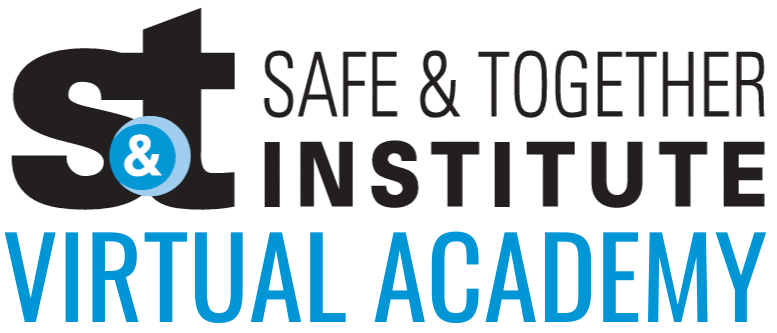The Safe & Together Model
Foundation Bundle
6 Essential Courses
Self-paced, interactive learning
What's Included?
Safe & Together™: An Introduction to the Model
Introduction to Model helps your workers become domestic violence informed. Children and their well-being is best served when they are with the domestic violence survivor. The Model provides a framework for partnering with domestic violence survivors and intervening with domestic violence perpetrators as parents in order to enhance the safety and well-being of children.
This course will help practitioners to gain basic knowledge of the principles & components which create the framework of the Safe & Together Model.
This course will help practitioners to gain basic knowledge of the principles & components which create the framework of the Safe & Together Model.
Multiple Pathways to Harm: A Comprehensive Assessment Framework
Assessing the impact of domestic violence perpetrator behaviors on child and family functioning requires using a comprehensive assessment lens. It takes skill and practice to full assess these complex family dynamics. This course provides an introduction to the Safe & Together Model’s Multiple Pathways to Harm assessment and critical thinking framework.
In this course, you will learn the best strategies for comprehensive, accurate assessment of the impact of the domestic violence perpetrator on child wellbeing and family functioning. This course defines accountability, the standard of behaviors, and creates opportunities for practice and systems change.
In this course, you will learn the best strategies for comprehensive, accurate assessment of the impact of the domestic violence perpetrator on child wellbeing and family functioning. This course defines accountability, the standard of behaviors, and creates opportunities for practice and systems change.
Working with Men as Parents: Fathers' Parenting Choices Matter
Working with men as parents is essential to understanding and improving the well-being and safety of children and families. This course helps you to work with men as parents around their behavioral choices which deeply impact child well-being and family functioning.
This course helps to define the best practices for working with men as parents, especially those that are from poor and historically oppressed and marginalized communities.
This course helps to define the best practices for working with men as parents, especially those that are from poor and historically oppressed and marginalized communities.
Intersections: When Domestic Violence Perpetration, Substance Abuse, and Mental Health Meet
Many families impacted by domestic violence perpetrators’ behaviors have multiple, complex, intersecting issues. In the past, we might have referred to these as co-occurring issues. But the language of co-occurrence often doesn’t provide us with a sense of how these issues interact. For example, listing the family’s issues is not as powerful as explaining how the domestic violence perpetrator interfered with his partner’s recovery or the children's sense of safety.
Using an intersections framework, versus a co-occurrence framework, we increase perpetrator accountability, improve our ability to diagnose and treat each member of the family, and improve our ability to help adult and child survivors.
This course will provide guidance on how to understand the connections, or intersections, and make them work for us in our practice.
Using an intersections framework, versus a co-occurrence framework, we increase perpetrator accountability, improve our ability to diagnose and treat each member of the family, and improve our ability to help adult and child survivors.
This course will provide guidance on how to understand the connections, or intersections, and make them work for us in our practice.
Write your awesome label here.
Partnering with Survivors
Partnering with adult survivors around the safety and well-being of their children is a central focus of domestic violence-informed practice. We want to keep children, safely, with the protective parent.
When practitioners partner well with an adult survivor, the survivor is more apt to share information about a) the perpetrator’s pattern, b) the impact of the perpetrator on child and family functioning and c) the survivor’s efforts around the protection of the children.
This course provides practical guidance for successfully partnering with survivors to improve assessment and increase the effectiveness of safety plans for the adult survivor and children.
When practitioners partner well with an adult survivor, the survivor is more apt to share information about a) the perpetrator’s pattern, b) the impact of the perpetrator on child and family functioning and c) the survivor’s efforts around the protection of the children.
This course provides practical guidance for successfully partnering with survivors to improve assessment and increase the effectiveness of safety plans for the adult survivor and children.
Worker Safety and Domestic Violence in Child Welfare Systems
When the staff feels supported, safe, and cared for, they will deliver their best work for the families in your communities. This training is designed to help you think critically about how systems can support workers’ safety when working with domestic violence perpetrators as parents. This course gives strategies for improving workers’ safety and effective practice with families. It gives the skills to create an agency environment that promotes an open dialogue about worker safety concerns and provides strategies for overcoming them.

